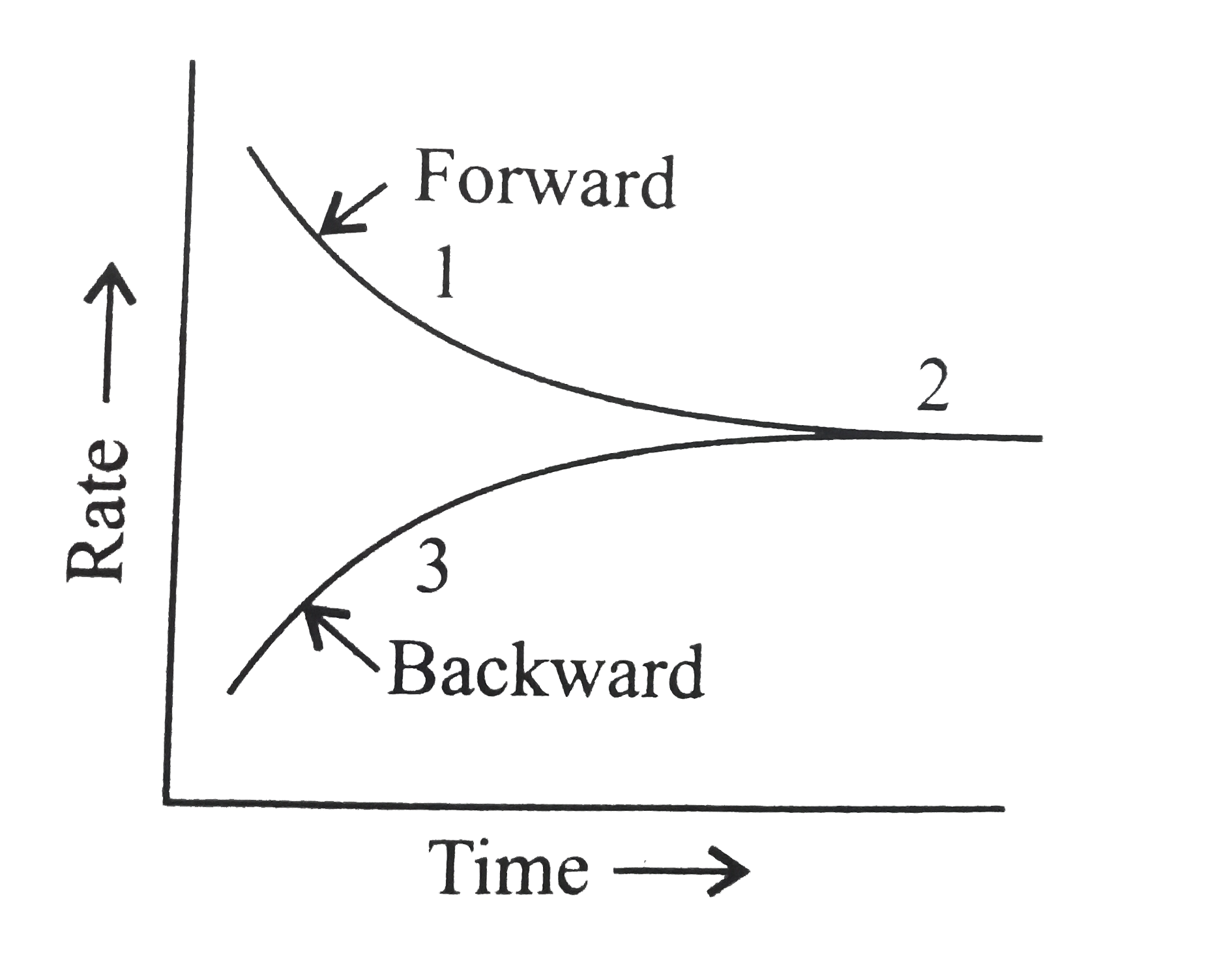As per law of mass action, for NH4HS(s) ⇔NH3(g)+H2S(g) ratio of rate constants of forward (Kf) & backword (Kb) reactions at equilibrium equals ot
[NH4HS]
PNH3+PH2S
[H2S]+[NH3]
[NH3][H2S]
The correct Answer is:D
To solve the problem regarding the law of mass action for the reaction:
NH4HS(s)⇌NH3(g)+H2S(g)
we need to determine the ratio of the rate constants of the forward reaction (Kf) and the backward reaction (Kb) at equilibrium.
1. Identify the Reaction:
The reaction given is:
NH4HS(s)⇌NH3(g)+H2S(g)
2. Write the Expression for the Equilibrium Constant (Kc):
According to the law of mass action, the equilibrium constant expression for this reaction can be written as:
Kc=(NH3)(H2S)(NH4HS)
3. Consider the State of the Reactants and Products:
In this case, NH₄HS is a solid. When writing the equilibrium constant expression, the concentration of solids is not included because it is considered to be constant (unity). Therefore, we can simplify the expression:
Kc=(NH3)(H2S)
4. Relate Kc to the Rate Constants:
At equilibrium, the relationship between the equilibrium constant and the rate constants for the forward and backward reactions is given by:
Kc=KfKb
5. Conclusion:
Therefore, the ratio of the rate constants of the forward and backward reactions at equilibrium is:
Kf=Kc⋅Kb
This indicates that the equilibrium constant Kc is equal to the ratio of the forward rate constant to the backward rate constant.
Final Answer:
The ratio of the rate constants of the forward (Kf) and backward (Kb) reactions at equilibrium equals Kc.
---
The reaction given is:
NH4HS(s)⇌NH3(g)+H2S(g)
According to the law of mass action, the equilibrium constant expression for this reaction can be written as:
Kc=(NH3)(H2S)(NH4HS)
In this case, NH₄HS is a solid. When writing the equilibrium constant expression, the concentration of solids is not included because it is considered to be constant (unity). Therefore, we can simplify the expression:
Kc=(NH3)(H2S)
At equilibrium, the relationship between the equilibrium constant and the rate constants for the forward and backward reactions is given by:
Kc=KfKb
Therefore, the ratio of the rate constants of the forward and backward reactions at equilibrium is:
Kf=Kc⋅Kb
This indicates that the equilibrium constant Kc is equal to the ratio of the forward rate constant to the backward rate constant.
The ratio of the rate constants of the forward (Kf) and backward (Kb) reactions at equilibrium equals Kc.
Similar Questions
Apply law of mass action to the process,
N2(g)+3H2(g)⇔2NH3(g).
View SolutionIn the equilibrium NH4HSs⇔NH3(g)+H2S(g).the forward reaction can be favoured by
View SolutionFor NH4HS(s)⇔NH3(g)+H2S(g) If Kp=64atm2, equilibrium pressure of mixture is
View SolutionNH4COONH4(s)⇔2NH3(g)+CO2(g). for the
above reaction, Kp is 4, Kc will be
View SolutionFor the reactions,
N2(g)+3H2(g)⇔2NH3(g),
Kp=Kc(RT)…..
View SolutionNH4HS(s)⇔NH3(g)+H2S(g)
In the above reaction, if the pressure at equilibrium and at 300K is 100atm then what will be equilibrium constant Kp ?
View SolutionNH4HS(s)⇔NH3(g)+H2S(g)
In the above reaction, if the pressure at equilibrium and at 300K is 100atm then what will be equilibrium constant Kp ?
View SolutionFor the reaction, N2(g)+3H2(g)⇔2NH3(g), the units of Kp are …………
View SolutionOn adding NH4HS in following equilibrium NH4HS(s)⇔NH3(g)+H2S(g)
View SolutionMass action rato or reaction quotient Q for a reaction can be calculate using the law of masss action
A(g)+B(g)⇔C(g)+D(g)
Q=[C][D][A][B]
The value of Q decides whether the reaction is at equilibrium or not.
At equilibrium, Q=K
For an equilibrium process, Q≠K
when Q>K, reaction will favour backward direction and when Q<K, it will favour direction.
Answer the following questions:
In the reaction:
NH4Cl(g)⇔NH3(g)+HCl(g)
a graph is plotted to show that the variation or the rate of forward and backward reaction against time.
Which of following is correct?

View Solution
